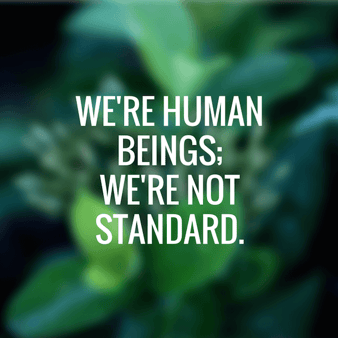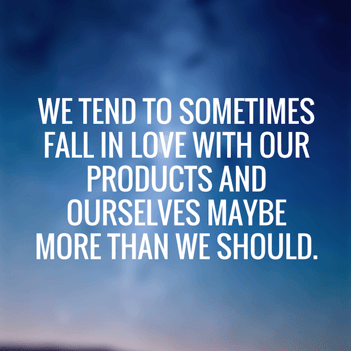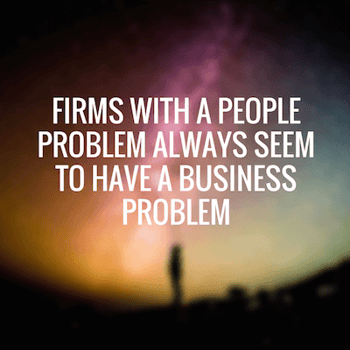It’s not everyday you meet an executive coach who takes his survival lessons from the Amazon jungle and an Afghanistan prison into billion-dollar boardrooms.
Chas Klivans combines those early experiences plus his work as a founder, turnaround expert and psychotherapist into a toolkit that’s guiding company executives to solve operational challenges and to align management into an A-Team.
In this edition of Transformation Talk, Chas shares best practices for how to successfully navigate companies through bumpy waters, even when there is no map.
Tell me about an interesting business transformation lesson.
CK: Six of us are crowded into the dugout canoe, bobbing in the waters of the Rio Madre de Dios in the Peruvian Amazon jungle. Our last connection to the outside world, a grey beat-up Land Rover, growled back up the gravel road and disappeared. We were alone on the river, floating downstream to Manu National Park to see wild animals and to meet people from the Mashco-Piro tribe, one of the last uncontacted tribes in South America.
I realized that everything I knew to be true didn’t work here. It sunk in, you could take several steps away from camp into this thick rainforest jungle, get turned around, and never be seen again!
We had chosen our jungle survival guides carefully and made a conscious decision to relax and trust them, which allowed us to approach this alien environment with the acceptance and curiosity it deserved.
What happened to me is happening to you, it just does not look the same on the surface…but it’s the same. The new business climate is uncharted territory to corporate leaders in the same way the Peruvian rainforest was new to me. However, in the new business jungle many company leaders still use the familiar tactics they have always used.
When I got into companies, likewise I learned having seasoned business jungle guides helpful and I coined the term "Kitchen Cabinet". I recall working with a subsidiary of a 230 year old European luxury crystal china company. They had a $20 million dollar subsidiary that was failing. The President of the subsidiary was going to be fired by corporate unless he turned it around in 12 months, and he had tried everything he knew.
I said, why don't we build a Kitchen Cabinet of two CEOs who have built a similar company twice as large as your $20 million dollar business? We're also going to find two Chief Financial Officers, and lastly, two Chief Sales Officers, and the criteria is they will have built -- that's the operative word: built – similar companies two to three times larger than your division and with financial results in the highest 25% quadrant. They're going to tell us, just like real guides in the jungle - where to go, where not to go, and they're going to help all of us us stay out of the human frailty of denial. That’s exactly what the President did.
This subsidiary was going to be sold -- the President was going to lose his job, and since this was a family business, even more humiliating his uncles were going to terminate him. But he kept his job and a robust salary of $480,000 for two more years with the growth roadmap this Kitchen Cabinet helped build to take Sales from $20M to $50M, to reduce the Cost of Goods Sold from 50.4% to 30% of Revenue, and increase After-Tax Profit from 2% to 17.5%.
The lesson I've learned is: when no one is going to save you, when there is no safety net…you need to trust someone sometimes.
How important is it for leaders to slow down and be mindful in a constantly evolving and competitive landscape?
Business generally operate on the assumption that people are rational creatures. You hear people refer to employees almost as if they were "mules in a mule train" who are going to respond logically when their company is faced with threats from the marketplace.
However, there's a growing body of behavioral science research that finds that people aren't always rational, and even the smartest people tend to be influenced by the last thing heard from the person trusted the most. And people tend to be a little lazy. I’ve learned corporate teams can be guided by a cheap change in direction that produces an amplified effect, and that's why I consider Decision-Making Formats delicious.
Company leaders can harness the immense variability in humans by focusing on these small concrete opportunities to exploit. Below are two Decision-Making Formats that CEOs, division leaders, and departmental heads have used to open up fresh thinking and product innovation.
The First Mind Shift: “Are You a Hobby or Are You a Business?”
When I worked for the accounting firm, Ernst & Whinney, we were in a Board Meeting with the Sisters of St. Joseph Hospital System of Orange in Southern California. I was one of the “suits” from the accounting firm sitting at the Board table. The Sisters were sitting on the other side of the big table. We in the suits were saying, "You need to have a profit." And of course, the Sisters, whose mission is to serve the poor, said, "Oh, no, no. Our mission is service." And so, the conversation got a little heated.
The nuns weren't backing down, and we weren't backing down, and the conversation grew quite loud, and then Sister Peggy Chairwoman of the Board just stood up. She was no more than about five-foot-five, and she wags her finger at all of us, and she says, "You know no margin, no mission."
I have never forgotten that because what she knew in her heart without a speck of MBA training…that unless we can have a profit margin at the end of the year, we're not going to be serving anybody.
She knew that the profit ratio has to win out over the cherished people or it's a hobby. So, when I'm face-to-face with a strong willed leader, and they're having a problem with profitability, I ask them: what's the real purpose of your business?
The litmus test, I've found helpful for every management decision is: “Does this make us more of a wealth creation business (creating wealth for all employees) or more of a hobby (for the benefit of top executives)?
The Second Mind Shift: “Do You Love Products or Customers More?”
I always ask a management team to print on paper their marketing and business development materials, including their website and customer proposals. Then I have them take two different color magic markers, and I go through the exercise of explaining what a product “feature” is and what a “benefit” is. As you know a feature is part of how the product is made. A benefit is what it does for us, the consumer or recipient. I have them highlight in different colors - what they consider a feature and what they consider a benefit of their product or service. Then I ask them: which color dominates? You know which one dominates every time? Feature. Because we tend to fall in love with our products more than we need to.
What I have learned coming up through the sales ranks is, confused people do not buy, folks. You've got to connect the dots for them. I suggest the company show leadership by instructing all employees to openly talk-up product benefits in every verbal and written communication.
Let me suggest you ask your team: what is more important to the success of our company today making products or delighting customers? Your collateral materials do not lie.
You talk about increasing hard financial results using a soft universal law of human behavior. Can you go into depth a little bit more about what that concept means?

Back in the jungle, around 2:00 in the morning I hear this sniffing sound outside my tent, and I was so exhausted, I really thought, it's just a dog. I went back to sleep. Half a second later, I'm thinking, I'm in the freaking jungle! There're no dogs here. My god! This is a man-eating jaguar. Now, a jaguar has the 4th strongest bite of any animal on earth and at 2,000 psi it can easily crush a human skull with a bite. I happen to be alone in the last tent on the river bank. And I've watched these Disney movies where the jaguar picks off this lone animal in the herd, right?
Our chief guide Lucho had a shotgun broken down in his waterproof bag, but he's five tents away, I tried to scream but I could not make a noise, I was petrified. I grabbed in one hand my sheath knife with its six-inch blade and grabbed my flashlight in the other. Okay, this is it. I'm ready. I'm up all night ready to fight. Then I must have fallen asleep from exhaustion.
Around 7:00 am, I hear a knock on my tent post, and they are saying, "Chas, wake up! There's paw prints around your tent." I'm still dazed from a night without sleep. I drag myself out of the tent, and oh gosh there's prints! Well, these prints are the size of a quarter. It was a baby jaguar, the size of a little, cute house cat! That was all it was.
Let's roll back what happened to me underneath it all. First, I change my “thinking” from predator to cute baby cub. That enabled me, then to change how I “felt”, from terror to embarrassment. Going further to the right, that change propelled me to have a change in “action”: I put down my knife, and I laughed. We all have experiences like this.
FREE DOWNLOAD: Ideation Worksheet with Techniques to Jump Start Your Next Brainstorming Session
What happened to me uncovers a universal law of human behavior for you. From cognitive research we know there is a hidden dynamic at work underneath that makes this so powerful, and it is:
We Think > We Feel > We Act
In business for some reason we don't leverage this hidden law of human behavior. We focus in business on actions/results, the far right end of the continuum. However if you meet an employee who just did something stupid, wouldn’t you say as their manager, "What in the world were you thinking?" Intuitively we know old thinking gives old actions and new thinking gives new results.
This lesson can be summed up by the axiom commonly spoken by psychotherapists, “The map is not the territory!” Mental maps operate behind the scenes like in the Jaguar story. We trust them like family, but they contain some truth and some made up stuff, we just don’t know how much of each.
The lesson is: we have more power to change financial results in a company than we exercise. The order of events for employees is first we help them change their thinking, which changes how they feel…and then they are ready to change their behavior for the long term.
What are some solid skills you must have to be a good change leader? 
I think the first mark of a good change leader is having the craft to change any company in any economy with any product. And they can do it with average employees who work for an average boss who has an average owner. Because frankly most of us are 5s, although sometimes we like to think we are 10s. Being an average manager is really a gift.
Here’s an observation I can't shake. Companies with a business problem always seem to have a people problem, and firms with a people problem always seem to have a business problem. Thus secondly a good change leader appreciates running a company, division, plant, or department is a lot like eating a peanut butter and jelly sandwich. Usually, we're given the sandwich with the sweet jelly on top -- I'll call that the money half -- and the sticky peanut butter on the bottom I'll call the people half. But sometimes we're presented with a sticky peanut butter sandwich with the top half being peanut butter and sometimes the other half, jelly, on the bottom.
The lesson is: We need to fix both halves of every company problem at the same time, “because in real life there is no seam”. If we're only fixing the making money half or we're only fixing the people half…aren’t we really fixing only 50% of the company problem?
Learn more about Chas and his work here.
Do you know someone who’s particularly fantastic at business transformation? Is a master of changemanagement? A leader in teamwork? Nominate them — or better yet, nominate yourself (c’mon now, you’re awesome!) to be featured in our Transformation Talk series. Just send Nicole an email:nicole@kintone.com. Or send us a message on Twitter @Kintone.
About the Author
Nicole is Director of Marketing at Kintone, with 10+ years experience in content strategy, campaign management, lead acquisition and building positive work cultures of empowered, purpose-driven team members. She spent seven years as a journalist, previously serving as a CBS San Francisco digital producer, NPR contributor, Patagon Journal deputy editor and reporter for several publications, including the Chicago Tribune. She's passionate about the tech for good space, social entrepreneurship and women leadership. On the weekends, you’ll likely find her putting her Master Gardener skills to use in at community gardens in Oakland.












